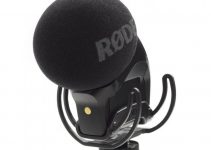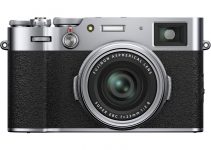The Tokina Vista Primes are beautiful looking lenses. They are high quality, fully metal, cine-style lenses and they have some impressive specs and features. Filming with Cine Primes comes with a lot of considerations, so let’s have a look at what we are getting into with Greg of LensProToGo.
In the video below, he does not only talk about Vista Primes build, size, and weight but he also shares some interesting insights regarding optical quality and performance of each individual lens.
First things first, the range includes some of the most popular focal lengths: 18mm, 25mm, 35mm, 50mm, 85mm, and 105mm.
How these focal lengths translate to the camera sensor will require some maths as these lenses come in a variety of mounts. The set is available in Canon EF, PL, Sony E, and even Micro 4/3’s. This is a great selection and may negate the need for adapters.
One of the most interesting features of these lenses is their coverage. They will be equally at home on a S35 sensor as they will on a Red Vista Vision or Arri LF, with no vignetting – cool!
The Vista Primes have 9 blade apertures resulting in smooth, round bokeh and this seems very pleasing when shooting wide open.
Speaking of wide open, the Vista Primes are sharp, right to the corners and right through the aperture range. This is nice to see but should be expected in lenses of this quality. Across the entire set is a wide open aperture of T1.5, even at 18mm, so expect some lovely shallow depth of field and all the effects that go with it.
The lenses have no electronics so that means no lens data and no autofocus. Generally, primes like these are designed for use with follow-focus systems so it’s probably not a requirement, but worth keeping in mind when you sling the set into your backpack and set off out shooting with them – more on why that’s a bad idea in a moment.
The lenses are all tack sharp and have a consistent look throughout the range as would be expected. The bodies are different lengths but the focus and aperture rings do line up to allow for easy and quick lens swapping while shooting with rigged accessories.
The above-mentioned rings are tight and smooth and will require a good effect to turn. This feels great but does have a bearing on the follow-focus motors you may be using.
Optically these lenses are high-end, there are another couple of videos linked that go into more depth but suffice to say here that they have little distortion and minimal focus breathing. The flares are green and blue, similar to the Sigma Primes.
The front diameters are standard and allow for screw-on filters that would perhaps save the need for adding a matte box.
This brings us on to a couple of important factors that are not so positive. These lenses are heavy, really heavy, between 5 and 6lbs. That’s why I wouldn’t recommend taking the set out with you for the day. Shooting with primes is a different kind of undertaking.
The second issue is, as you might have been expecting, the price. These lenses are pricey, ranging from $5,000 to $7,500 and that presents a problem as there are comparable lenses from companies like Sigma that are significantly cheaper (and lighter).
These are likely to be rental lenses and that is probably the best way to try them out and see if they are right for you.
[source: LensProToGo]
B&H Order Links:
- Tokina 18mm T1.5 Vista Cinema Prime Lens EF Mount
- Tokina 25mm T1.5 Cinema Vista Prime Lens EF Mount
- Tokina 35mm T1.5 Cinema Vista Prime Lens EF Mount
- Tokina 50mm T1.5 Cinema Vista Prime Lens EF Mount
- Tokina 85mm T1.5 Cinema Vista Prime Lens EF Mount
- Tokina 105mm T1.5 Cinema Vista Prime Lens EF Mount
Disclaimer: As an Amazon Associate partner and participant in B&H and Adorama Affiliate programmes, we earn a small comission from each purchase made through the affiliate links listed above at no additional cost to you.




